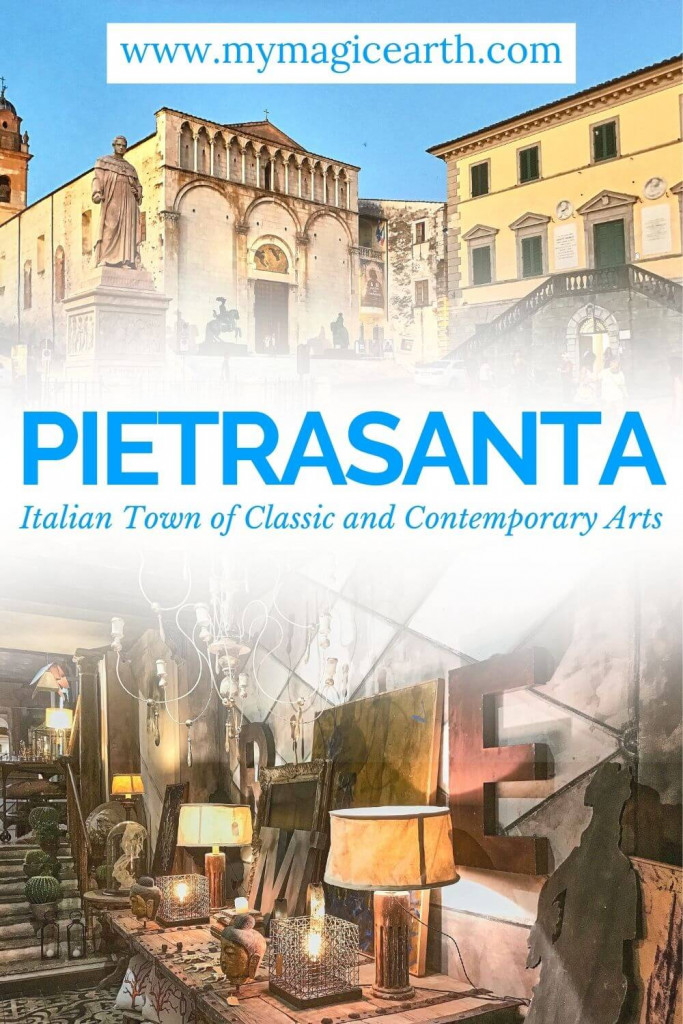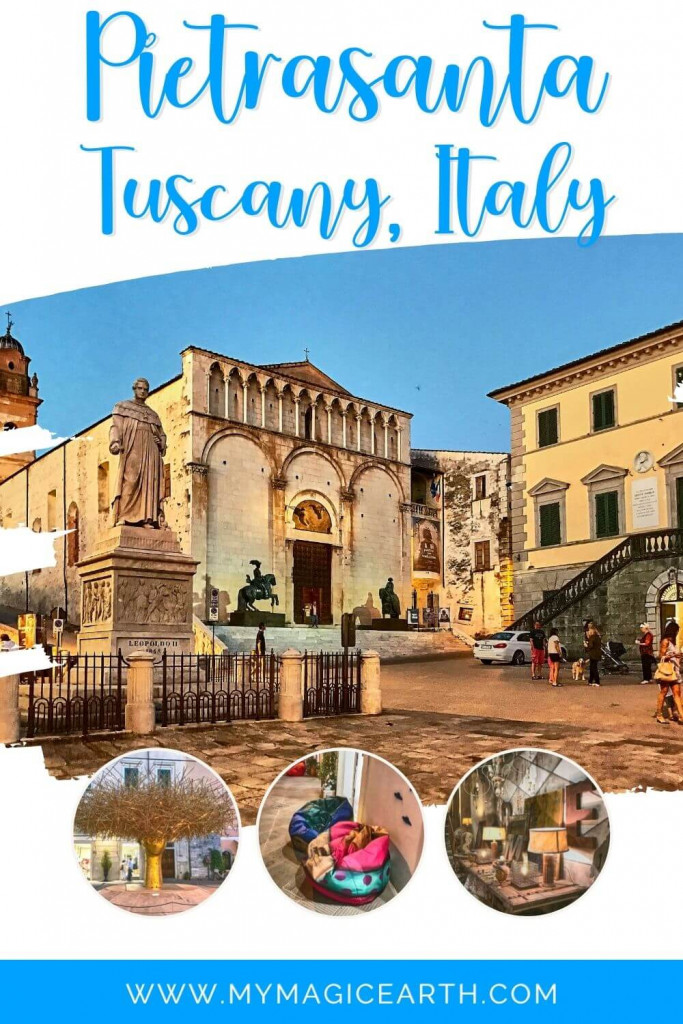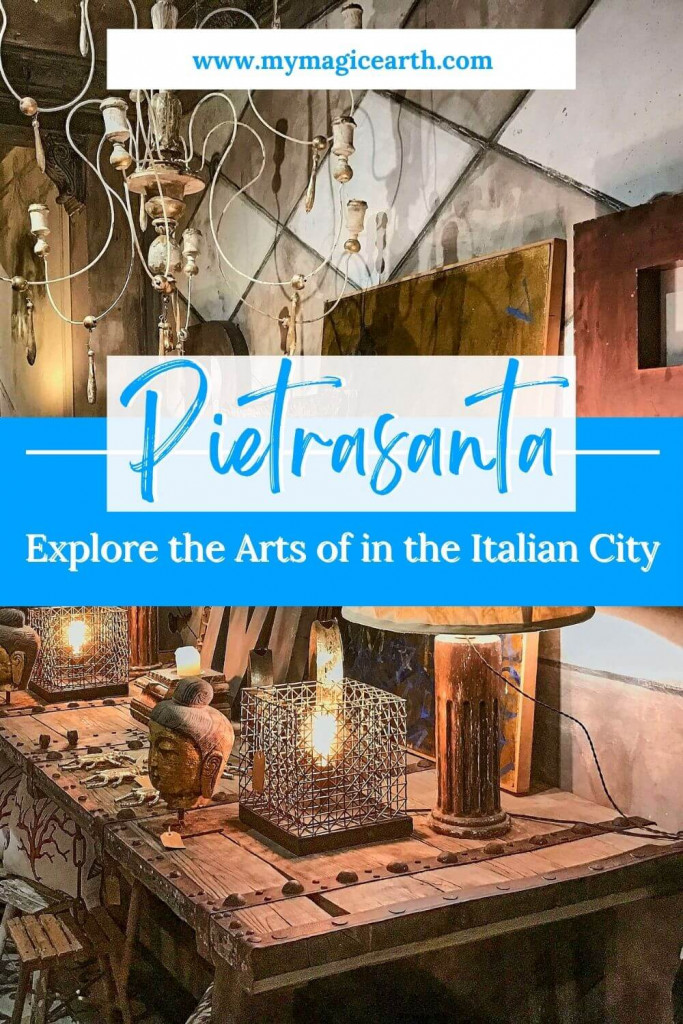Pietrasanta lies a few kilometres away from Forte Dei Marmi, the Ligurian beach area. It has its origins in the Middle Ages and was founded in 1255 by Guiscardo da Pietrasanta, the leader of Lucca, and was the ancient capital of the Medici headquarters in Versilia. Over the centuries, it has become a town with more than 20,000 inhabitants.
During the planning of our summer trip to Tuscany, we could not find enough information about Pietrasanta. Therefore, we did not consider visiting the place. But in one evening, we went there for dinner since the Google Map indicated plenty of Italian restaurants in Pietrasanta. However, as we entered the old historical town, we were totally distracted by the artworks, public piazzas, churches, and cozy evening atmosphere around the elegant historical town centre. Besides, one of the highlights is the numerous art galleries and streets art pieces:
- Historic buildings in the centre of Pietrasanta
- Centre of Bars and restaurants
- Streets of art galleries and boutiques
- Bozzetti Museum and Sketches Museum
If you travel to Pisa, Italy, you could make a short trip to Pietrasanta from there.
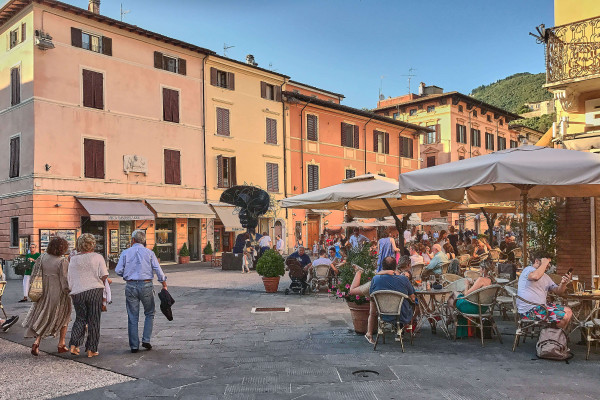
Historic buildings in the centre of Pietrasanta
The Cathedral of San Martino
Dating back to the 14th century, the Cathedral of San Martino overlooking the beautiful Piazza Duomo. Its magnificent rose window in the marble façade stands out.
The Bell Tower
In contrast to the Cathedral of San Martino, the 36 m-tall Bell Tower has an appearance of simple brickwork. Formerly, the Bell Tower was also covered with marble plates.
Sant’Agostino
Sant’Agostino used to be a church, but now it is the venue for art exhibitions and other cultural events. The church has a single nave with an awkward entrance and three rounded arches delimited by pilasters. The pilasters uphold twelve walled up spans.
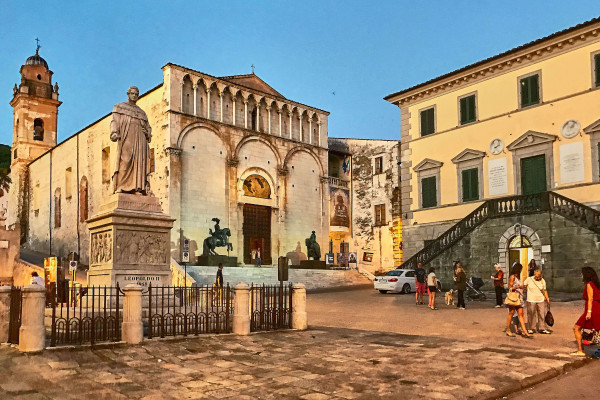
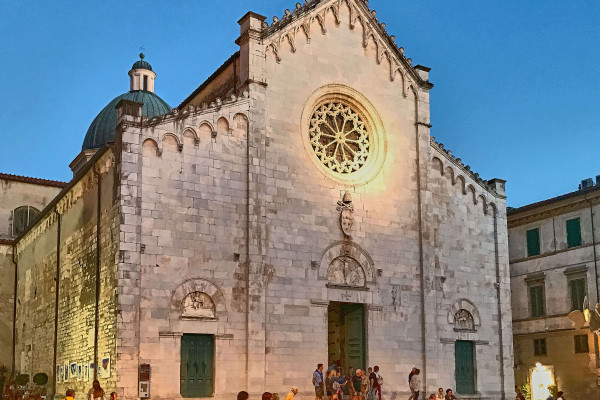
Baptistery of Pietrasanta
Baptistery of Pietrasanta, also known as Oratory of San Giacinto, is definitely a piece of art. Built in the 17th century, it has the only altarpiece which remains from that period. The interior decoration, including frescoes, medallions, and various sculptures, is beautiful.
Palazzo Moroni
Right next to the Cathedral of San Martino is the Palazzo Moroni. One of the buildings with a double staircase in front of its façade was from two 17th-century houses. Now, it hosts the Archaeological Museum and the Municipal Historical Archives.
City Hall and City Tower
The City Hall is just outside the centre, the Piazza Duomo. Built around 1530, the City Tower’s current appearance dated back to 1860. And the City Tower is in the middle of two buildings, with an adjoining bar and a cafeteria.
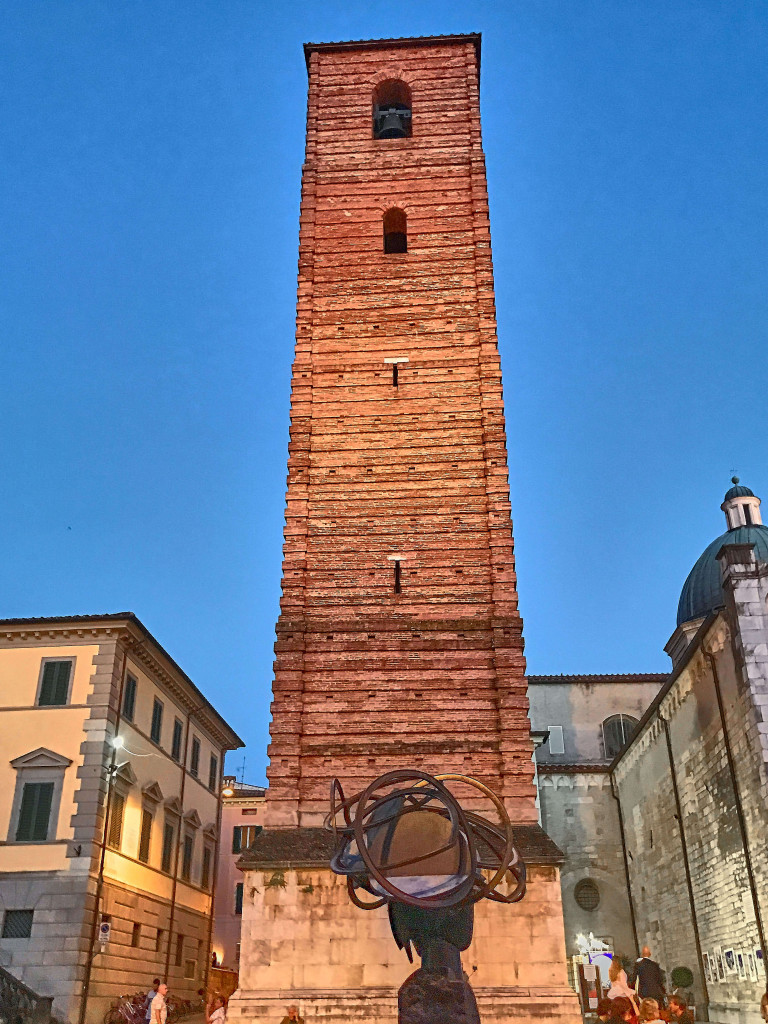
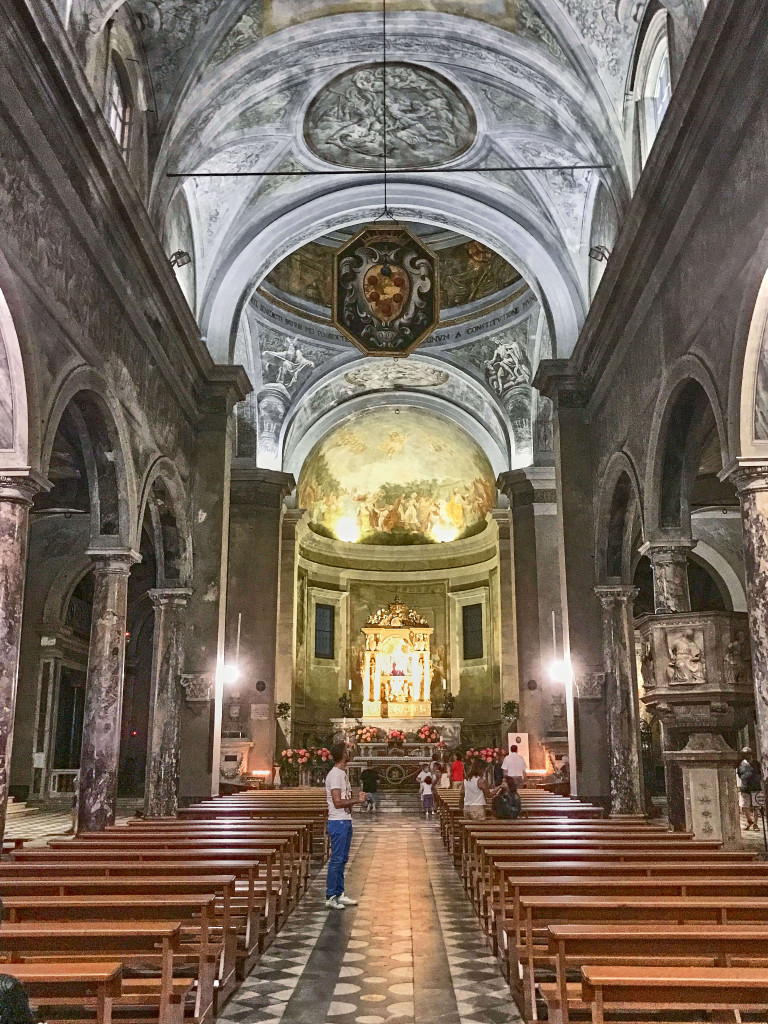
Centre of Bars and restaurants
Finally, our eyes moved away from the historic building and focused on the menus outside the restaurants. Our stomachs started rumbling because the menus were so tempting. It was already after 20:00 pm, many Italians arrived in decent dresses and flooded into eateries.
We felt somewhat embarrassed because we did not change any clothes after our day trip and looked weary and hungry. Some tourists had the same situation. Nevertheless, all waiters smiled at us warmly when we approached their restaurants.
There are too many high-class Italian restaurants and bars to keep everyone happy. All restaurants have outdoor settings, very colorful and tempting. Based on the names of each eatery, we were able to select a seafood restaurant. A plate of Italian seafood pasta had more seafood than pasta. Our seafood starters were freshly prepared, and a plate of Tuna steaks had 5-6 thick pieces of tuna. Although the food was freshly made, we had nearly zero waiting time. The quality and the quantity of the food is top.
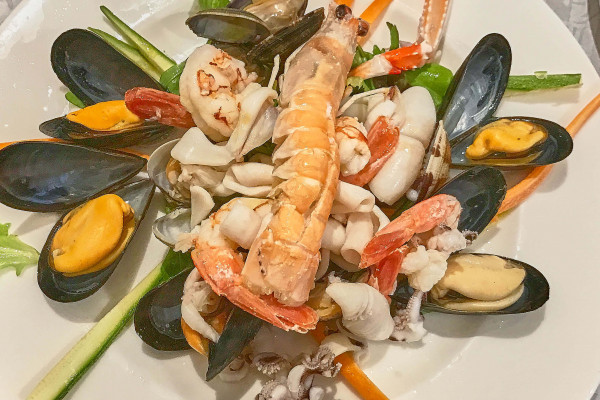
Streets of art galleries and boutiques
After our dinner, we took another walk through the side streets. To our surprise, because we discovered the uniqueness of the town. The centre part of streets Via G. Garibaldi and Via Stagio Stagi is dotted with many fine arts galleries and boutiques. These are classic and contemporary art galleries, craft studios such as a workshop for hand-made shoes, boutiques for interior designs and wine bars, etc. Most open till late evening, therefore people could still visit them after their long dinners.
Along the two streets, many seating places laid on the ground next to every shop. Everyone could use them for a rest. Locals like to sit there and chat with each other till late at night. By all means, one can spend a couple of hours roaming around the streets.
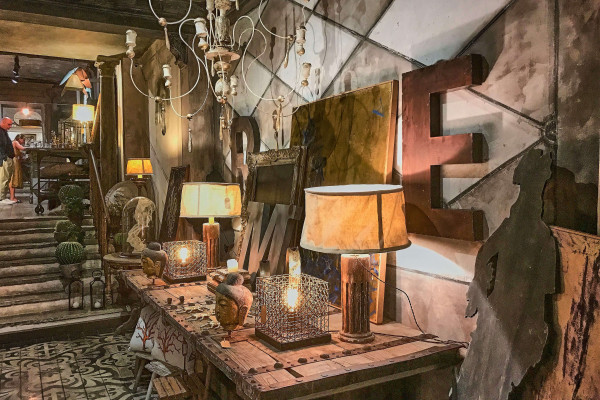
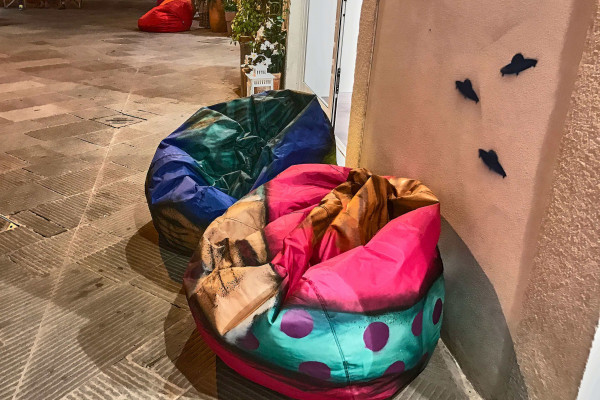
Bozzetti Musuem and Sketches Museum
There are two museums of interests:
- Bozzetti Museum, an exceptional museum dedicated to marble sculpture. It is located at Via Sant’Agostino c/o Centro Culturale Luigi Russo, 55045, Pietrasanta
- Sketches Museum Pierluigi Gherardi, which is located at Via Sant’Agostino 1, 55045 Pietrasanta
In fact, Pietrasanta is the perfect destination for art enthusiasts, both classic and contemporary. Over the centuries, it has been an influential centre of marble extraction and working. It is also a well-known gathering place for artists from all over the world. Over the years, many artists have decided to settle down here.
In recent years, Pietrasanta has become an open-air museum, where visitors can admire sculptures and art pieces among streets and piazzas. We saw many art pieces in the centre, such as a metal tree shining in the sunset.
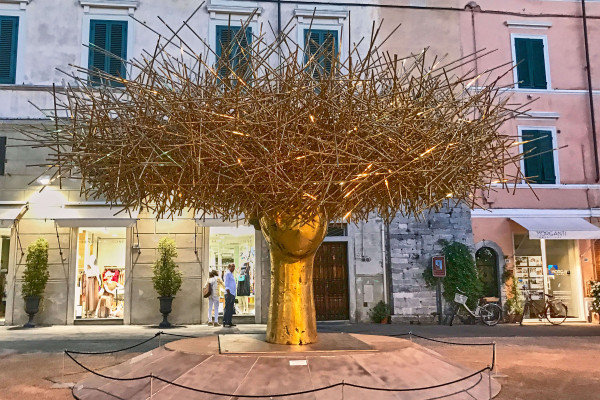
Travel Tips
Suggested tours
Pietrasanta is part of several organized tours, for example, visit historic Versilia by e-bike. The Carrara marble route tour also includes the visit of Pietrasanta.
Where to stay
As a cultural tourism destination, Pietrasanta is a great home base for exploring the Cinque Terre of Liguria, Portovenere, and other Tuscany destinations. There are many good hotels in this area at reasonable prices. In the summer holiday season, hotels along the Ligurian coast are quite expensive. If you don’t want to plan your holiday only for beaches, you could probably consider to stay in this town.
Two hotels below are in the centre of the town:
Where to stay
- The best way is by car. If you arrive from Florence, take A11 and then A12, exit at Versilia.
- Pietrasanta is well connected to other Italian cities. You can book tickets online.
- There are buses to and from other Tuscan cities. Please check www.omio.com for the bus schedules.
- The closest airport is Pisa’s Galileo Galilei Airport, which is 45 km away.
